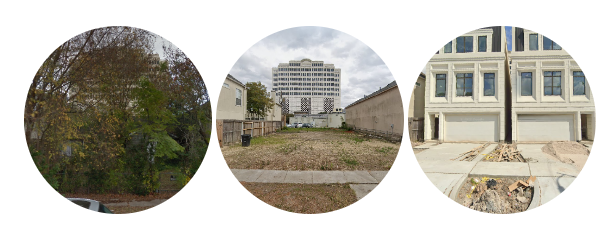Physical Address
304 North Cardinal St.
Dorchester Center, MA 02124
Physical Address
304 North Cardinal St.
Dorchester Center, MA 02124

Continuing this series of book reviews on Jane Jacobs’ works, I now turn to Cities and the Wealth of Nations. But there is already a fantastic piece on the Market Urbanism website, by Matthew Robare, who reviews this book and outlines what Jacobs overlooks in her analysis. So, this piece takes a slightly different angle: inspired by (but not limited to) Jacobs’ ideas, it aims to highlight what mayors, governors and urban policymakers could do differently if they are serious about developing their cities into economic powerhouses. Here are some of the most important takeaways from this book and also how they can be expanded upon. (1) Focus on cultivating import-replacement The economies of cities do not grow out of nothing. They grow by adding productive new forms of work to old ones, by innovating, and by being cultivators of new ideas and techniques. This process of cataclysmic growth – that Jane Jacobs describes as ‘import-replacement – occurs when a city takes its existing imports and builds upon them, either improving its production through lowering costs, increasing quality, or innovating. The market for these additional goods can either be found within the city itself or serves to expand the city’s exports. These exports, in turn, bring in additional resources to either acquire additional imports or be reinvested into fuelling the processes that fuel import-replacement. Not for nothing does Jacobs describe import-replacement as a ‘cataclysmic’ process – these changes often happen over a very short period and can bring about a rapid influx of people, ideas and capital. We see this in New York City, which grew from half a million residents in 1850 to over 3.4 million at the dawn of the twentieth century. Detroit went from having 250,000 residents in 1900 to a peak of 1.8 million by 1950. […]
One common anti-urbanist argument is that families simply don’t want to live in cities. But analysis by New York’s Department of City Planning (DCP) also shows that prosperous parts of New York City generally added children, at least in the decade before the rise of the COVID-19 virus. DCP divided the city into “neighborhood tabulation areas” (NTAs) with population ranging from 15,000 to 100,000. DCP’s data showed that the city as a whole lost 2 percent of its under-18 population between 2010 and 2020, but that some areas had significant gains. The biggest gainers were Long Island City (over 200 percent) and four areas where the under-18 population increased by between 50 and 75 percent (the Financial District, Midtown, Midtown South, and Downtown Brooklyn). There seems to be a positive correlation between child growth and housing supply growth, even in these expensive areas. In the Long Island City NTA, the number of housing units increased by over 100 percent between 2010 and 2020- so it is no surprise that the number of children increased. Housing supply increased significantly in three of the four NTAs that added the most children. The number of number of occupied housing units increased by 23 percent in the Midtown South NTA, by 26 percent in the Financial District NTA, and by 86 percent in the Downtown Brooklyn NTA. (Central Midtown was an exception to the rule; housing supply increased more slowly there). By contrast, in Manhattan as a whole, the number of housing units increased by only 7 percent, and the number of children actually declined. Moreover, affluent areas that added very little housing supply tended to gain under-18 residents at a much slower pace. For example, in the three Upper East Side (NTAs) (Lenox Hill, Carnegie Hill, Yorkville) the number of housing units increased […]

Jane Jacobs’ The Death and Life of Great American Cities, published in 1961, revolutionised urban theory. This essay kicks off a series exploring Jacobs’ influential ideas and their potential to address today’s urban challenges and enhance city living. Adam Louis Sebastian Lehodey, the author of this collection of essays, studies philosophy and economics on the dual degree between Columbia University and SciencesPo Paris. Having grown up between London and Paris, he is energised by the questions of urban economics, the role of the metropolis in the global economy, urban governance and cities as spontaneous order. He works as an Applied Research Intern at the Mercatus Center. Since man is a political animal, and an intensely social existence is a necessary condition for his flourishing, then it follows that the city is the best form of spatial organisation. In the city arises a form of synergy, the whole being greater than the sum of its parts, for the remarkable thing about cities is that they tap into the brimming potential of every human being. In nowhere but the city can one find such a variety of human ingenuity, cooperation, culture and ideas. The challenge for cities is that they operate on their own logic. Cities are one of the best illustrations of spontaneous order. The city in history did not emerge as the result of a rational plan; rather, what the city represents is the physical manifestation of millions of individuals making decisions about where to locate their homes, carry out economic transactions, and form intricate social webs. This reality is difficult to reconcile with our modern preference for scientific positivism and rationalism. But for the Polis to flourish, it must be properly understood by the countless planners, reformers, politicians and the larger body of citizens inhabiting the space. Enter Jane […]

The benefit-cost ratio of housing supply subsidies looks terrible. And the state of research is even worse.
In Escaping the Housing Trap, Charles Marohn and Daniel Herriges address the role of zoning in creating the housing crisis. Like some other recent books (most notably by Nolan Gray and Bryan Caplan) this book shows how zoning limits housing supply and thus has led to our current housing crisis. But unlike Gray and Caplan, Marohn and Herriges focus on modest, politically feasible reforms rather than on the benefits of total deregulation. Like other authors, Marohn and Herriges discuss the history of downzoning. For example, in Somerville, Mass., a middle-class suburb of Boston with 80,000 residents, only 22 houses conform to the city’s own zoning code. And in San Francisco, 54 percent of homes are in buildings that could not legally be built today. In Manhattan, 40 percent of buildings are nonconforming. Why? Because zoning has become steadily more restrictive over time, making new housing difficult to build. Where development occurs, it is in a tiny fraction of the region’s neighborhoods- usually, either at the outermost fringe of suburbia or in a few dense urban neighborhoods. For example, in Hennepin County, Minnesota (Minneapolis and its inner suburbs) 75 percent of all housing units built between 2014 and 2019 were in 11 percent of the county’s neighborhoods. In Cuyahoga County, Ohio (Cleveland and its inner suburbs) 75 percent of housing units were built in under 5 percent of the county’s neighborhoods. Marohn and Herriges also critique some anti-housing arguments. For example, one common argument is that only public housing is useful, because the very poor will never be served by the market. They correctly respond that even if there will always be some people in need of government assistance, adequate housing supply will reduce that number. They write that housing policy “will look very different in a situation where the market […]

Check out my new post at Metropolitan Abundance Project: How “inclusionary” are market-rate rentals? In metropolitan Baltimore, a family of four making $73,000 in 2024 qualifies for 60% AMI affordable housing, where it would pay $1,825 per month for rent, utilities included. A third of new market-rate three-bedroom units in Baltimore are rented at around that level.Baltimore is typical, as it turns out. In most U.S. metro areas, a substantial share of rentals constructed since 2010 were, in 2021 and 2022, affordable at 60% of AMI… You can also check out maps showing rentals affordable at 80% and 120% of AMI. The ACS data don’t let me distinguish market-rate from subsidized rentals, so these include LIHTC and other subsidized rentals. Those, however, can’t explain away the core result, and the data don’t show the bifurcated market that some people imagine, with a huge gap between market and deed-restricted rents.

Just 1 in 25 new apartments is owner-occupied. What happened to building condos?
I recently ran across an interesting discussion on Twitter about housing costs. Someone praised Chicago’s low housing costs, and someone else responded that because Chicago’s most troubled neighborhoods are so unusually dangerous and disinvested (compared to the most troubled parts of a safer city like New York), the low costs of these areas artificially deflated citywide averages. To put it another way, to compare Chicago and New York you should look at comparable neighborhoods rather than regionwide averages. For example, one reasonable comparison might be between Chicago’s reasonably desirable inner suburbs and New York’s. I picked four suburbs that I have visited and that are reasonably close to city boundaries: Great Neck and Cedarhurst on the New York Side, Skokie and Evanston on the Chicago side. According to Trulia.com, the cheapest two bedroom condo* (other than one that clearly needs major renovations) in Evanston sells for $115,000 and the cheapest in Skokie for $165,000. By contrast, Great Neck condos start at around $350,000, and Cedarhurst prices are similar. Similarly, elite intown areas are cheaper in Chicago. I looked at Chicago’s Lakeview, where I spent part of my honeymoon five years ago; two-bedroom units there start at $235,000. By contrast, in Manhattan’s Upper West Side such units start at $730,000 (not counting units that require extensive renovation or are income-restricted). To sum up: regional averages do seem to reflect the reality of housing costs, at least in these two cities. *I picked two bedroom condos for the somewhat arbitrary reason that I currently live in a two-bedroom apartment. *

Updated 1/11/24 to add 3 new papers, Wegmann, Baqai, and Conrad (2023), Dobbels & Tavakalov (2023), and Hamilton (2024). The original post was published 3/14/23. A concerted research effort has brought minimum lot sizes into focus as a key element in city zoning reform. Boise is looking at significant reforms. Auburn, Maine, and Helena, Montana, did away with minimums in some zones. And even state legislatures are putting a toe in the water: Bills enabling smaller lots have been introduced [in 2023] in Arizona, Massachusetts, Montana, New York, Texas, Vermont, and Washington. The bipartisan appeal of minimum lot size reform is reflected in Washington HB 1245, a lot-split bill carried by Rep. Andy Barkis (R-Chehalis). It passed the Democratic-dominated House of Representatives by a vote of 94-2 and has moved on to the Senate. City officials and legislators are, reasonably, going to have questions about the likely effects of minimum lot size reductions. Fortunately, one major American city has offered a laboratory for the political, economic, and planning questions that have to be answered to unlock the promise of minimum lot size reforms. Problem, we have a Houston Houston’s reduced minimum lot sizes from 5,000 to 1,400 square feet in 1998 (for the city’s central area) and 2013 (for outer areas). This reform is one of the most notable of our times – and thus has been studied in depth. For a summary treatment, see Emily Hamilton’s 2023 case study. To bring all the existing scholarship into one place, I’ve compiled this annotated bibliography covering the academic papers and some less-formal but informative articles that have studied Houston’s lot size reform. Please inform me of anything I’m missing – I’ll add it. Political economy of Houston’s reform M. Nolan Gray & Adam Millsap (2020). Subdividing the Unzoned City: An Analysis […]
I’ve noticed numerous stories and tweets about a building boom: for example, a recent CNBC story asserts that the number of new apartments is “at a 50-year high.” Various twitterati have used this claim to support their own points of view: some claim that rents are stabilizing because of this new surge in supply, while others argue that the failure of rents to decline shows that new supply doesn’t reduce rents. But is supply really increasing that rapidly? Federal statistics on housing construction are at a Census housing data webpage. I looked at the “New Housing Units Completed” table and found that about 216,000 housing units in structures with over five units were completed in the first half of 2023. On the positive side, this is definitely an improvement over the 2010s, when the economy was still recovering from the 2008 recession. For example, in the first half of 2019, just over 169,000 such units were built, and 2018 was pretty similar. But is construction still up to Reagan-era levels? Not really. In the first half of 1986, almost 258,000 relevant units were completed. And in the first half of 1973, just over 378,000(!) such units were built. And these levels of construction were in a less populous country. Today the U.S. population is about 335 million, up from about 240 million in 1986 and 212 million in 1973. So if construction had kept up with population, our new unit count would be about 1/3 higher than in 1986, and almost 60 percent higher than in 1973. Instead, construction went down. To put the facts another way: our half-year multifamily construction rate is about 644 per one million Americans for 2023, down from 1075 per million in 1986 and 1783 per million in 1973. That’s not my idea of a […]